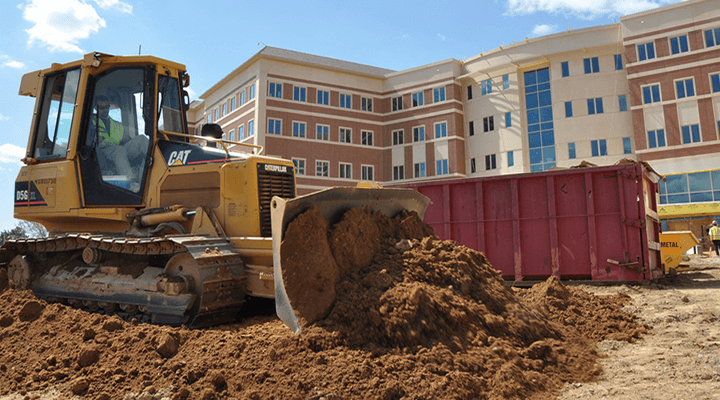In April, the Congressional Research Service released the President’s Fiscal Year 2019 Military Construction Budget Request, which highlighted that President Trump has requested a new budget authority for FY2019 in the amounts of $10.5 billion in the base budget and $921.4 million for the Overseas Contingency Operations (OCO) budget. This totals $11.4 billion in new spending on military construction and military family housing.
In budget planning for real property, there remains a tradeoff between maintaining and adapting existing facilities and building new facilities. Both are given close consideration. Funds for the operation and maintenance of defense property are referred to as Base Operation Support (BOS) and Facilities, Sustainment, Restoration, and Maintenance (FSRM). These are then appropriated as part of the Operation & Maintenance (O&M) allocation within the defense appropriation.
New construction is also funded through Title I of the Military Construction, Veterans Affairs, and Related Agencies bill.
Just as the once again hot consumer housing market has resulted in a surge of new homes being built, now could be the time that new military construction picks up after a decline. Military construction appropriations peaked in FY2009, which was followed by a sharp decline through FY2015. The combined funds expended for property maintenance (BOS and FSRM) also rose from FY2001, when it was $16.3 billion, through FY2009, when it reached $41.2 billion. In the same period maintenance spending has stabilized at the increased level, averaging $35 billion per year.
FY2012 also saw significant reduction in military construction investments by CENTCOM as operations in the region were curtailed. The FY2019 request by the President highlights continued steady investments in Pacific Command (PACOM) and a notable increase in European Command (EUCOM, principally Eastern Europe and the Baltic States).
The April Construction Budget Request report was followed in May, with the “Military Construction: Process, Outcomes, and Frequently Asked Questions” report. It highlights end-to-end military construction process by which the Department of Defense and Congress act together, beginning with the requirements for facilities – ranging from warehouses and barracks to hospitals and schools for military forces at home and overseas – and ending with the opening of the doors for occupancy.
Construction encompasses several phases and these include the planning and design of the project as well as the solicitation of bids from the prospective general contractors. After both of these are accomplished the construction itself begins. One of two general approaches – either design-bid-build or design-build – is used by the contracting officer when it comes to actually executing the project.
For these types of projects congressional authorization and appropriation is required and the project then is the responsibility of either the Naval Facilities Engineering Command (NAVFAC) for Navy and Marine Corps projects; or the Army Corps of Engineers (ACE) for Army and Air Force Projects. In addition all 31 Army and Air National Guard headquarters bureaus are charged with managing their own respective projects.
Higher Construction Budgets = Rising Construction Salaries
In addition to the normal bidding process, military construction often requires security clearance for those working on the job site. The new growth in military construction spending may be why construction salaries are on the rise. The 2018 ClearanceJobs Compensation Report found that cleared construction jobs saw a 12 percent growth in base salary year-over-year.
A dwindling talent pool in recent years, coupled with looming political and economic uncertainty, has left many construction leaders to deal with what has become a serious issue. According to the 2017 Construction report from Jones Lang LaSalle IP, Inc. there were already indicators that showed a growing backlog of contractor work, while seasonal construction spending was up 5.7 percent year-over-year.
This trend has continued in 2018.
“Both markets, construction and the cleared space, are two of the tightest labor markets, and cleared construction intersects with both. Rates are increasing because of supply and demand,” said Debra Fiori, SVP, talent management at Parsons Corporation, a digitally enabled solutions provider and a global leader in many diversified markets with a focus on security, defense, and infrastructure.
“It’s a candidate’s market; candidates are driving salary negotiations, especially when you consider the current backlog of pending security clearances,” Fiori told ClearanceJobs. “It can take almost two years to obtain approval for a security clearance, so organizations are seeking and competing for a limited pool of talent with active clearances to fill immediate needs.”




